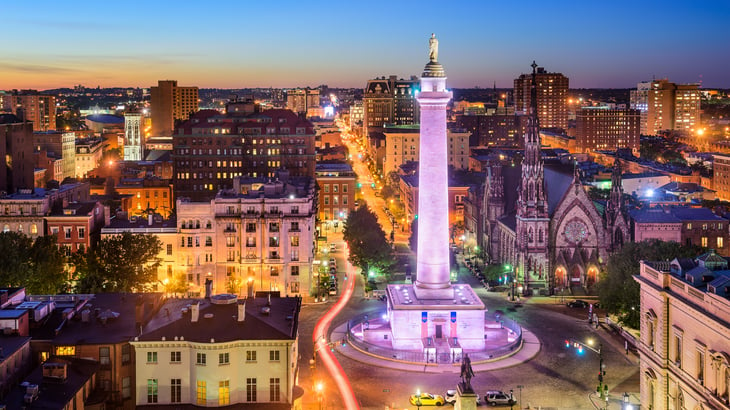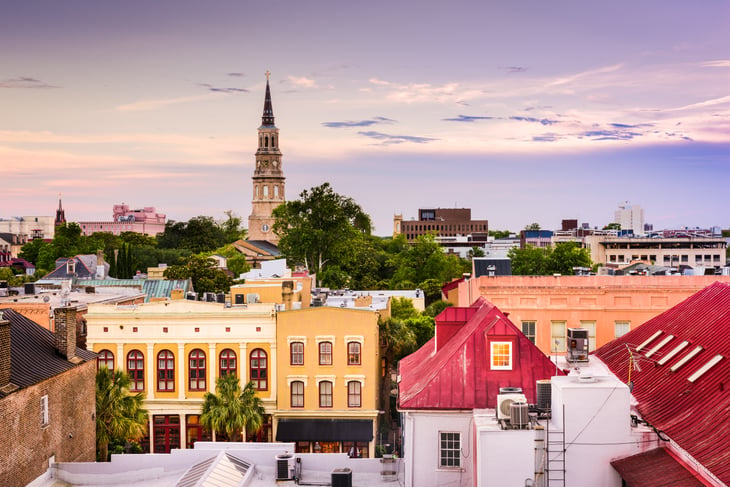
Editor's Note: This story originally appeared on Construction Coverage.
The U.S. rental vacancy rate — or the measure of rental homes that are vacant in a given area — is facing a long-term decline. The rental vacancy rate is an important economic indicator because it signals the balance between supply and demand for rental homes.
When the rate is relatively high, it indicates an abundance of available rental properties, which typically places a downward pressure on rent prices. But with the rental vacancy rate being the lowest it’s been since the mid-1980s, competition over available units is fierce and prices are historically high.
The result is that many renters have no choice but to designate more and more of their income to rent.
While the federal government is attempting to address the housing affordability issue by closing the housing supply shortfall broadly across the nation, the housing problem is affecting certain areas more than others.
To determine the locations with the highest rental vacancy rates, researchers at Construction Coverage, a construction and home improvement website, calculated the percentage of rental homes that are unoccupied in Q1 2023. In the event of a tie, the location with the greater percentage of households in occupied housing units that rent was ranked higher.
The data used in this analysis is from the U.S. Census Bureau and the U.S. Department of Housing and Urban Development. Here are the U.S. metropolitan areas with the highest rental vacancy rates.
15. Oklahoma City, OK

- Rental vacancy rate: 9.4%
- Percentage of households that rent: 36.1%
- Median monthly rent: $1,150
- Percentage of renters that are cost-burdened: 49.9%
14. Albany-Schenectady-Troy, NY

- Rental vacancy rate: 9.5%
- Percentage of households that rent: 34.4%
- Median monthly rent: $1,408
- Percentage of renters that are cost-burdened: 46.7%
13. New Orleans-Metairie, LA

- Rental vacancy rate: 9.6%
- Percentage of households that rent: 34.8%
- Median monthly rent: $1,328
- Percentage of renters that are cost-burdened: 57.3%
12. Atlanta-Sandy Springs-Alpharetta, GA

- Rental vacancy rate: 9.8%
- Percentage of households that rent: 33.1%
- Median monthly rent: $1,790
- Percentage of renters that are cost-burdened: 53.1%
11. Nashville-Davidson–Murfreesboro–Franklin, TN

- Rental vacancy rate: 9.9%
- Percentage of households that rent: 33.1%
- Median monthly rent: $1,580
- Percentage of renters that are cost-burdened: 50.4%
10. Minneapolis-St. Paul-Bloomington, MN-WI

- Rental vacancy rate: 10.1%
- Percentage of households that rent: 28.3%
- Median monthly rent: $1,496
- Percentage of renters that are cost-burdened: 48.9%
9. Dallas-Fort Worth-Arlington, TX

- Rental vacancy rate: 10.8%
- Percentage of households that rent: 40.2%
- Median monthly rent: $1,693
- Percentage of renters that are cost-burdened: 51.8%
8. Raleigh-Cary, NC

- Rental vacancy rate: 10.9%
- Percentage of households that rent: 32.2%
- Median monthly rent: $1,644
- Percentage of renters that are cost-burdened: 50.0%
7. Indianapolis-Carmel-Anderson, IN

- Rental vacancy rate: 10.9%
- Percentage of households that rent: 32.4%
- Median monthly rent: $1,162
- Percentage of renters that are cost-burdened: 46.0%
6. Little Rock-North Little Rock-Conway, AR

- Rental vacancy rate: 11.2%
- Percentage of households that rent: 35.7%
- Median monthly rent: $1,077
- Percentage of renters that are cost-burdened: 50.1%
5. North Port-Sarasota-Bradenton, FL

- Rental vacancy rate: 11.8%
- Percentage of households that rent: 24.2%
- Median monthly rent: $1,816
- Percentage of renters that are cost-burdened: 55.4%
4. Birmingham-Hoover, AL

- Rental vacancy rate: 11.9%
- Percentage of households that rent: 29.6%
- Median monthly rent: $1,254
- Percentage of renters that are cost-burdened: 53.7%
3. Houston-The Woodlands-Sugar Land, TX

- Rental vacancy rate: 12.3%
- Percentage of households that rent: 38.5%
- Median monthly rent: $1,511
- Percentage of renters that are cost-burdened: 52.3%
2. Baltimore-Columbia-Towson, MD

- Rental vacancy rate: 12.8%
- Percentage of households that rent: 32.6%
- Median monthly rent: $1,716
- Percentage of renters that are cost-burdened: 53.2%
1. Charleston-North Charleston, SC

- Rental vacancy rate: 15.3%
- Percentage of households that rent: 29.2%
- Median monthly rent: $1,804
- Percentage of renters that are cost-burdened: 52.5%
Methodology

The data used in this analysis is from the U.S. Census Bureau’s 2023 Housing Vacancies and Homeownership and the U.S. Department of Housing and Urban Development’s 2023 50th Percentile Rent Estimates.
To determine the locations with the highest rental vacancy rates, researchers at Construction Coverage calculated the percentage of rental homes that are unoccupied in Q1 2023. In the event of a tie, the location with the greater percentage of households in occupied housing units that rent was ranked higher.
Researchers also calculated the median monthly rent and percentage of renters that are cost-burdened, which are those renters who spend more than 30% of their income on rental housing. To improve relevance, only the largest 75 metropolitan areas with complete data were included in the analysis.





Add a Comment
Our Policy: We welcome relevant and respectful comments in order to foster healthy and informative discussions. All other comments may be removed. Comments with links are automatically held for moderation.